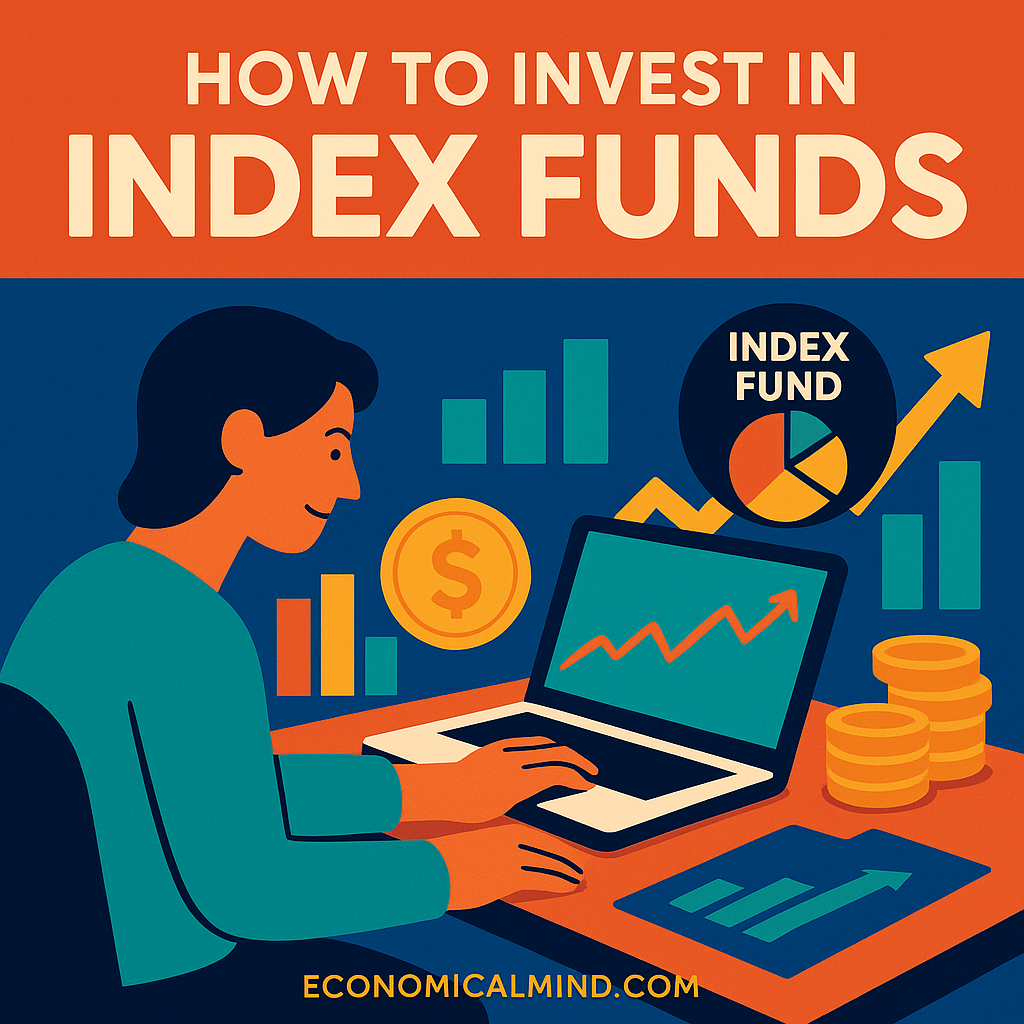
Why Index Funds Are the Smart Investor’s Choice
In 2025, index funds remain one of the most reliable, low-stress ways to grow your money. Instead of trying to beat the market, index funds let you own the entire market — capturing steady growth over time without constant trading or stock-picking.
They’re simple, affordable, and ideal for anyone who wants long-term results without spending hours analyzing stocks.
Step 1: Understand What an Index Fund Is
An index fund is a type of investment that tracks the performance of a specific market index — like the S&P 500, Nasdaq 100, or Total Market Index.
That means when you buy shares of an index fund, you’re investing in all the companies that make up that index — hundreds or even thousands of stocks in one purchase.
Example:
If you invest in an S&P 500 index fund, you’re buying a small piece of 500 major U.S. companies — including Apple, Microsoft, Amazon, and more.
Step 2: Choose Between Mutual Funds and ETFs
There are two main types of index funds:
- Index mutual funds: Bought directly through investment companies like Vanguard or Fidelity.
- Index ETFs (Exchange-Traded Funds): Trade like individual stocks on exchanges and can be bought through most online brokerages.
Key difference: ETFs are more flexible — you can buy or sell them anytime the market is open. Mutual funds, on the other hand, are priced once a day after the market closes.
Step 3: Select Your Investment Platform
In 2025, there are more options than ever for investing in index funds. Some of the most beginner-friendly platforms include:
- Vanguard: Known for pioneering low-cost index funds.
- Fidelity: Offers zero-fee index funds and great customer support.
- Charles Schwab: Ideal for low-cost ETFs and easy account setup.
- Robinhood / SoFi / Webull: Popular for no-commission investing and mobile convenience.
Choose a platform with low fees, automatic investing options, and good customer tools. The difference in fees can add up significantly over time.
Step 4: Know the Key Metrics
Before investing, pay attention to these important numbers:
- Expense Ratio: The annual fee you pay to own the fund. Look for funds under 0.10% — that’s just $1 per $1,000 invested yearly.
- Minimum Investment: Some mutual funds require $1,000+ to start, while ETFs can be bought with as little as $10 through fractional shares.
- Tracking Error: How closely the fund follows its index. Smaller tracking errors mean more accurate performance.
Step 5: Diversify Your Portfolio
Even though index funds are diversified by nature, it’s smart to spread your money across different types of index funds:
- U.S. stock index funds (e.g., S&P 500, total market funds)
- International stock index funds (exposure to Europe, Asia, emerging markets)
- Bond index funds (for stability and lower volatility)
A balanced portfolio might include 80% stock funds and 20% bond funds for long-term investors, or a more conservative split for those closer to retirement.
Step 6: Decide How Much to Invest
Start small but stay consistent. Even $50–$100 a month can grow substantially over time thanks to compound interest.
For example, investing $200 monthly at an average 7% annual return could grow to over $240,000 in 30 years — proof that time in the market beats timing the market.
Set up automatic contributions so investing becomes a habit, not a decision.
Step 7: Focus on Long-Term Growth
The biggest advantage of index funds is their ability to build wealth passively over decades.
Avoid the temptation to check prices daily or panic when the market dips. History shows that:
- The S&P 500 has averaged 7–10% annual returns over long periods.
- Long-term investors who stay invested tend to outperform short-term traders.
Patience and consistency are your best assets.
Step 8: Reinvest Dividends
Most index funds pay dividends — your share of the profits from the companies in the fund.
By choosing the option to automatically reinvest dividends, your earnings buy more shares and accelerate compound growth without extra effort.
Step 9: Review Once a Year
You don’t need to micromanage your investments, but it’s smart to review your portfolio annually. Check that:
- Your asset allocation still matches your goals and risk level.
- Fees remain low.
- You rebalance if one area grows too large (for example, stocks jump from 80% to 90% of your portfolio).
This annual tune-up keeps your investments aligned with your financial goals.
Step 10: Stay the Course
Index investing is simple — but not always easy. When markets drop, it’s tempting to sell. But remember, downturns are temporary; long-term growth is not.
In fact, continuing to invest during market dips often yields better results, since you’re buying more shares at lower prices.
As Warren Buffett famously said:
“The stock market is a device for transferring money from the impatient to the patient.”
Why Index Funds Work for Everyone
Index funds are perfect for:
- Beginners — because they’re simple and automatic
- Busy professionals — because they require no maintenance
- Retirement savers — because they grow steadily with minimal fees
You don’t need to predict which company will succeed next. Index funds let you benefit from the success of the entire market.
Quick Tips for Successful Index Investing
- Start early — time beats timing.
- Keep costs low; small fees eat big returns over time.
- Automate monthly contributions.
- Don’t chase the latest “hot” fund — stick with consistent, broad indexes.
- Review your investments once a year, not every day.
Final Thoughts
Learning how to invest in index funds in 2025 is one of the smartest financial moves you can make. They offer simplicity, diversification, and powerful long-term growth — without the stress of constant trading.
By starting small, automating your investments, and staying patient, you’ll set yourself up for lasting wealth — and a lot less financial anxiety along the way.
